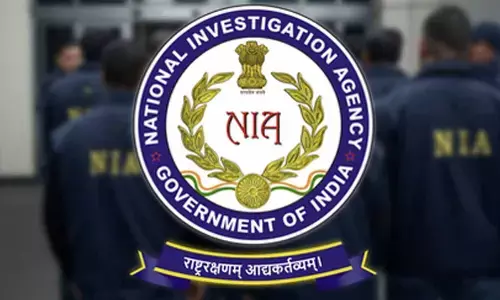Adivasis are key to Indian culture, Mahabharata explains

Unlike in other cultures, the Adivasi populations of India have lent a distinct colour and flavour to the Hindu thought and philosophy
"Adi Deo Arya Devata" is a profound work by Sandhya Jain on the Adivasi contribution to the Hindu society. Unlike in other cultures, the Adivasi populations of India have lent a distinct colour and flavour to the Hindu thought and philosophy.
This work illustrates how the Adivasi population shaped the spiritual-cultural landscape of India without confining itself to the periphery of mainstream Hindu society. There has always been a deep symbiotic relationship between tribes and non-tribe populations. The Mahabharata tells us how closely knit the tribes had been with the mainstream of kingdoms of the yore.
Lord Shiva had always been worshipped by forest-dwelling communities along with various forms of Shakti. Lord Vishnu's avatars like Varaha and Narasimha or even Lord Ayyappan for sure have tribal flavours. Mata Vaishno and Lord Jagannath also fall under this category and enjoy pre eminent status. Perhaps, keeping in view all these factors that Mahatma Gandhi insisted on tribal1s been an inalienable part of Hindu society.
The Mahabharata epitomizes the Indian genre of historical literature, known as Itihasa. It is the country's most famous historic and epic poem. Yet it is far more than an ordinary narrative of events leading up to a great war, and encompasses both a philosophy of life as well as a code of conduct.
The German Indologist Hermann Oldenberg observed: "The Mahabharata breathes the united soul of India and the individual souls of her people." The Mahabharata itself states that that which is not found in it cannot be found elsewhere.
Two of the most popular prayers of the Hindus, the Vishnu Sahasranama (revealed by a dying Bhishma to Yudhisthira) and the Bhagavad Gita (enunciated by Krishna to a distraught Arjuna on the battlefield, on the very eve of the war), came down from Mahabharata.
As Sandhya Jain explains, the Mahabharata provides a panoramic view of the society, politics and culture of the subcontinent. When we look at the tribes of the Mahabharata period, we come to know that most of these were pre-Buddhist. The epic has an excellent depiction of the demography of the age.
Alongside the Vedas, Brahmanas and Puranas mention tribes of different periods to teach us how ancient our history is and how well developed it was. The Rigveda discusses three categories of people, namely, Arya, Dasa and Asuras The Rig Vedic Aryas comprised several tribes, which increased in number over a period of time. Some tribes listed in the Rig Veda retain their names down to the present, such as the Yadu, Puru, Shiva, among others, while others changed their names following division and migration to new lands. The famous Dasarajna yuddha probably recalls an intra-tribal feud. Brahmana literature also depicts early Indian ethnography. The Bhuvanakosa chapters of the Puranas deal with the ethnography of ancient India, and are also included in the Epic, Sandhya Jain lucidly explains.
While the Rig Veda shows little knowledge of the region outside the Saptasindhu, the epics and Puranas tend to use geographical names, such as Sindhu, Panchala, Matsya, Chedi, Kashi, Koshala, and so on. The Mahabharata speaks not only of Arya peoples, but of Deva, Danava, Gandhara, Yaksha, Rakshasa, Naga and other groups, though scholars are not certain if these were really a class of people who played a role in the events narrated in the epic, or constitute the remnants of an antique tradition that was incorporated into the story.
The Mahabharata ethnographers classified the natives of the land into three broad categories, namely, Arya, Mleccha (alien) and Misra (mixed). The theory of a single pure racial type in India no longer enjoys academic credibility, and it is also now accepted that there was no Aryan race but an Aryan language and culture. The same is true of the Dravidas. The term Arya as used in the Mahabharata denotes a way of life, and cannot be used to delineate racial strains in the ancient Indian tribes.
The incorporation of native tribes into Arya culture began at a very early stage. From the new evidence coming to light about tribal kingdoms in the Gupta and post-Gupta period, and their impulse towards cultural homogenization within their region through acceptance of the Sanskrit language and Brahmin priests and officers, we can surmise that this trend was most likely the result of a natural socio-cultural-political evolution rather than external stimuli.
What makes the Mahabharata of special interest is the fact that it reveals a stage when the earliest tribal (kinship) grouping submitted to a larger regional national identity under the pressure of the emergence of some powerful Kshatriya kingdoms. The epic thus reflects a decline in tribal culture and transition to states. Another factor that should not be missed is that most of the kings got married to some tribe chieftain's daughter or the other thus giving them an equal status.
Those who treat Adivasis as backward and claim to 'modernize' or 'civilize' them should by now understand that they are far more advanced people than us leading a more eco-friendly life.








